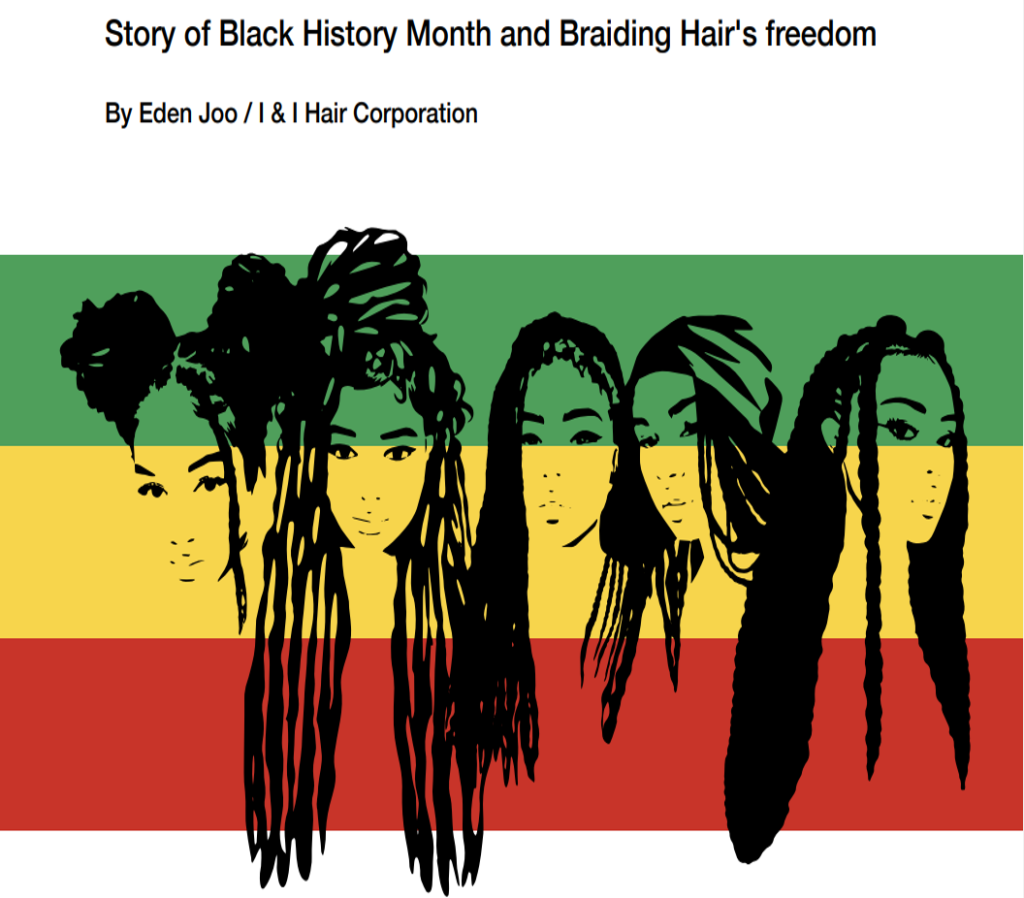
왜 흑인역사 기념의 달이 생겼을까?
해마다 2월이 오면 Black History Month에 대한 기사나 컨텐츠가 눈에 띄게 늘어나기 시작했다. 흑인손님이 많은 가게일수록 마케팅 측면에서도 2월을 중요하게 생각하고 이벤트나 세일품목을 고민한다. 우리가 인종차별을 배격하고, 다민족 문화에 적응하려는 성숙의 일면일 수 있다. 그러나 한편, 그저 남들이 하니까 그냥 장사속으로 하는 것 같다는 생각이들기도 한다. 대다수 손님이 흑인들인 우리에게는 Black History Month는 더 큰 의미가 있다.
Black History Month를 기리게 된 시초의 인물은 누구였을까? 마틴루터킹? 말콤? 그 주인공은 바로, 카터 고드윈 우드슨 박사.미국의 역사가, 작가이자 아프리카계 미국인 삶과역사 연구 협회의 창립자이다. 1915년 카터 G 우드슨 박사에 의해서 시작된 Black History Week 운동이 시초였고 1976년 제럴드 포드 대통령이 흑인 역사의 달을 국가 기념일로 선포, 미국 의회가 1986년 2월을 Black History Month로 지정하는 법을 통과 시키면서 흑인들의 인권보호를 기억하고 문화를 존중하는 뜻을 기리기 시작했다.
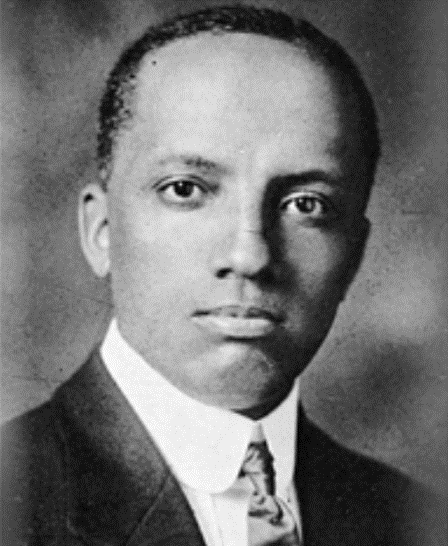
Cater Godwin Woodson
Why was Black History Month created?
Since some time ago, there has been an increase in articles and content about Black History Month throughout the entire month of February. The more black customers a store has, the more important they consider February from a marketing perspective, thinking about events and sale items. It seems that they are moving beyond racial discrimination and becoming more mature in adapting to multiculturalism. However, on the other hand, there is also a tendency to use Black History Month for marketing p urposes without fully understanding the meaning or reasons behind it, just because others are doing it. In our beauty market, where we handle hair and beauty products and the majority of our customers are black, Black History Month may have more significance than other days. It may be worthwhile to take a closer look at the traces of history.
Who was the pioneer of Black History Month? Martin Luther King? Malcolm X? The protagonist was actually Dr. Carter G. Woodson, an African-American writer and founder of the Association for the Study of African American Life and History. The Black History Week movement, initiated by Dr. Carter G. Woodson in 1915, was the beginning, and in 1976, President Gerald Ford declared Black History Month as a national holiday. In 1986, the U.S. Congress passed a law designating February as Black History Month to honor the protection of the rights of black people and respect their culture.
왜 2월달일까?
바로 흑인노예 해방에 대해 큰 영향을 끼친 아브라함 링컨(2/12)과 노예제 폐지론자 프레드릭 더글라스(2/14)의 생일이 2월이었고 카터 우드슨박사가 그 2월 주간을 기념하는 Black History Week 운동을 시작했는데, 이 운동이 발전되어 이어지면서 Black History Month 로 지정되게 되었다. 사실 역사의 한 부분이다보니 어렴풋이 우리는 추측은 할 수 있다. 노예해방(1865년)이 되기전에 흑인들의 삶이 어땠는지, 그들이 얼마나 비참한 인생과 처절한 유산을 물려받았는지 말이다. 하지만 노예해방이 되고 난 이후에도 흑인들의 삶은 그렇게 많이 나아지지 않았다. 노예해방이 있고 50여년이 지난 후 일어난 ‘붉은 여름’ (Red Summer, 1919-1921) 의 날을 돌아보면 알 수가 있다.
1919년 여름, 미국 일리노이 주 시카고. 당시 미국 흑인들은 남부에 주로 살았었는데, 노예해방은 되었지만 매일같은 백인들의 폭력, 살해에 견디지 못하고 동부, 중서부, 서부 등지로 도망가다시피 이주하기 시작한 것이다. 그리고 시카고 사우스 사이드에 자리잡은 흑인들은 고기 처리 공장에서부터 일을 시작하면서 삶의 터전을 일구고 있었는데, 이 흑인 동네 바로 옆에 살던 아일랜드계 미국인들은 흑인들이 이주해오면서 자신들의 일자리를 빼앗았다는 이유로 흑인 동네를 습격해 일방적으로 흑인들을 집단 린치하고 살해하고 불살랐다. 비슷한 시기 네브라스카 주에서 일어난 폭동사진을 보면 잔인하다못해 미친 사람들 같았다. 자신들이 때려 죽인 흑인을 불태우는 시체 앞에서 단체 사진을 찍기도 했으니 말이다.
Why February?
It is because the birthdays of Abraham Lincoln (2/12), who had a significant impact on the emancipation of black slaves, and Frederick Douglass (2/14), an abolitionist, were both in February. Dr. Carter G. Woodson started the Black History Week movement, which evolved into Black History Month. It is a part of history, and we can make some guesses. It is about how black people lived before the emancipation of slaves in 1865 and how they inherited a miserable life and a harsh legacy. However, even after the emancipation of slaves, the lives of black people did not improve significantly. If we look back at the Red Summer (1919-1921), which occurred more than 50 years after the emancipation of slaves, we can see this.
In the summer of 1919, in Chicago, Illinois, African Americans, who used to live mainly in the South, began to flee to the East, Midwest, and West to escape daily violence and killings by white people. African Americans who settled on the South Side of Chicago were building their lives by starting work in meat processing factories. However, Irish Americans who lived right next to the black neighborhood attacked the black neighborhood, claiming that black people had taken away their jobs. They lynched and killed black people en masse and set fire to their businesses and homes. Looking at the photos from that time, it is horrific to see people who look like madmen, taking group photos in front of the bodies of black people they had beaten to death.

2년뒤 1921년 여름에는 미국 오클라호마 주 Tulsa에서 미국 역사상 가장 큰 규모의 폭동이 일어났다. 한 여름날 흑인 구두닦기 소년과 백인 여자가 엘리베이터에 같이 타고 있었는데, 순간 엘리베이터가 흔들려 남자가 실수로 여자에 몸에 손을 대게 되었고, 여자가 놀라 소리를 지르자 주변 백인들이 그 남자에게 성폭행 혐의를 덮어씌우고 그자리에서 끔찍한 폭력과 고문을 하였다. 백인여자도 성폭행이 아니었고 무고하다고 호소했지만 소용 없었다. 수십명의 흑인들이 재판장에 모였으나 KKK단원 등 백인 우월주의자를 비롯한 수백 명의 백인들이 순식간에 몰려나와 흑인들의 가게와 주택에 불을 지르고 수백명에 이르는 흑인들을 집단 린치 및 살해하였다. 당시 이 사건으로 6000여명의 흑인들이 구류되고, 800여명이 병원에 입원하였고, 당시 털사에 블랙 월스트릿이라고 불리던 흑인 최고 부자 동네는 전소가 되는등, 신분 지위 상관없이 중산층 이상의 부자들도 예외없이 폭력 당하고 약 300여명이 살해당했다.
Two years later, in the summer of 1921, the largest riot in U.S. history occurred in Tulsa, Oklahoma. On a summer day, a black shoe shiner boy and a white woman were in the same elevator. The elevator shook for a moment, and the man accidentally touched the woman’s body. When the woman screamed in surprise, white people around her accused the man of sexual assault, and a crowd of hundreds of white people quickly gathered and subjected him to brutal violence and torture. Although the woman testified that it was not sexual assault and that she was innocent, it was of no use. Dozens of black people gathered at the trial, but hundreds of white people, including KKK members and white supremacists, quickly gathered and lynched and killed black people en masse. At that time, about 6,000 black people were detained, over 800 were hospitalized, and the black neighborhood known as Black Wall Street in Tulsa was destroyed. Even the wealthy middle class, regardless of their social status, suffered violence, and about 300 people were killed.
흑인 유산 = 브레이드 헤어
불과 100년 전에 있던 일들이다. 역사를 되짚어보면서 오랜시간동안 마음 속 깊은 곳까지 큰 상처를 받은 흑인들이 안타깝고 아직까지도 그 흔적이 삶에 남아있는 것 같아 안타까운 마음이 든다. 현대화가 되어가면서 흑인들의 삶과 터전도 많이 변해져왔다. 여전히 자신들의 문화와 유산을 지키려고 애쓰는 흑인들을 보면서 대단하다는 생각이 들때도 많이 있다. 그중에 가장 두드러지는 것은 브레이딩 헤어이다. 단순히 헤어를 넘어서서 강력한 문화적 상징이자 예술적 표현의 수단으로서 세대와 세대를 이어 계승되어 가는 모습을 보게 된다. 어쩌면 브레이딩 헤어야 말로 자신들의 뿌리를 알게 하고 자신들의 아름다운을 표현하는 가장 예술적인 문화 표현이라는 생각을 한다.
Black Heritage = Braided Hair
These were events that happened just 100 years ago. As we look back on history, it is heartbreaking to see the deep scars that black people have suffered in their hearts for a long time, which still remain in their lives. As they modernize, we often think about how remarkable it is to see black people who strive to preserve their culture and heritage. Among them, the most prominent is braided hair. It is not just about hair, but it is a powerful cultural symbol and an artistic expression that has been passed down from generation to generation. Perhaps braided hair is the most artistic expression of their culture, expressing their roots and beauty
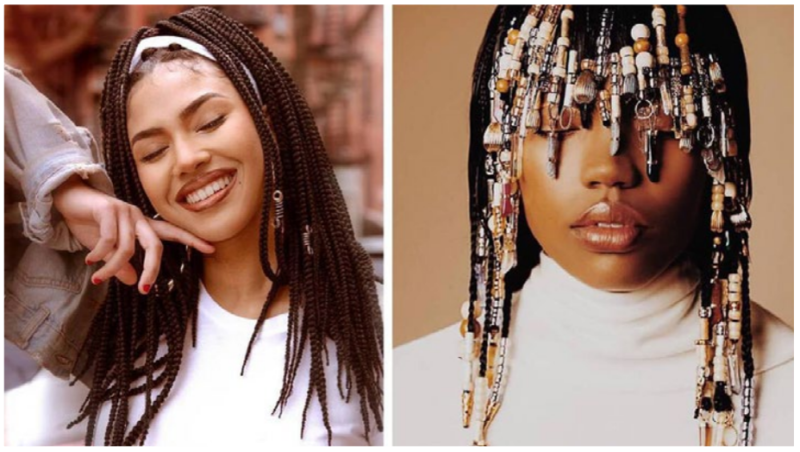
브레이드 헤어도 자유를 얻다!
EZBRAID 가 태어난 곳, 미국 달라스 텍사스 주에는 아이시스 브랜틀리 라는 여성이 있다. 아이시스는 1981년부터 아프리칸 브레이딩 스튜디오를 열어 브레이딩과 자연스러운 헤어에 대해서 강조해왔다. 브레이딩이라는 행위는 아프리칸으로서의 신성한 뿌리와 자신을 이어주는 영적이고 문화적인 행위라는 신념이 있었기 때문이다. 브레이딩 교육과 헤어를 해오던 스튜디오는 성공을 이뤘다. 1995년 어느날 한 텍사스 미용자격검사관이 찾아와 텍사스에서 브레이딩을 하려면 라이센스가 필요하다고 통보했다. 헤어염색과 손톱 케어들을 포함해 1500 시간을 이수해야하고 이는 9개월의 트레이닝과 수천불의 비용을 지불해야 가능한 자격증이었다.
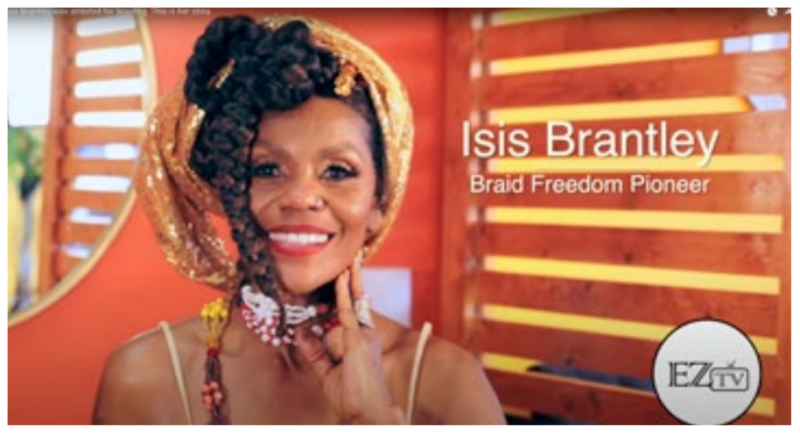
브레이딩 헤어는 서양 헤어 미용 기술과는 다르고 이는 문화적인 것이고 어릴 때부터 자신들이 해오던 머리인데 이 머리를 왜 자격증을 받아야하는지 따졌지만 소용 없었고, $600불의 벌금을 맞았다. 이후 다행히 벌금은 면제받았고 아이시스는 브레이딩 교육을 이어갔다. 2년 뒤 벌금미납과 불법시행이라는 명목으로 결국 체포되고 말았다.
이후 벌금을 내고 풀려났지만 브레이딩 헤어를 미용자격증을 받아야만 할 수 있다는 것이 도무지 이해가 되지 않았던 아이시스는 결국 소송을 제기했다. “브레이딩은 우리의 신념이자 문화이다. 나는 문화와 종교에 대해서 왜 규제가 있어야 하는지 이해가 되지 않는다.” 오랜동안 법적 공방을 이어오다
2015년 모든 소송에서 승소하고 텍사스에서는 미용 자격증 없이 브레이딩을 시행해도 된다는 선포와 함께 수 많은 흑인들, 브레이더들에게 브레이딩문화유산으로 계속 이어갈 수 있도록 했다.
Braided Hair also gained freedom!
In Dallas, Texas, the birthplace of EZBRAID, there is a woman named Isis Brantley. Since 1981, Isis has been emphasizing braiding and natural hair at her African Braiding Studio. Braiding was considered a sacred root and a spiritual and cultural act as an African. The studio, which provided braiding education and hair services, was successful. One day in 1995, a Texas cosmetology inspector came and informed Isis that a license was required to braid hair in Texas. To obtain the license, she had to complete 1,500 hours of training, including hair coloring and nail care, which would take nine months and cost thousands of dollars.
Braided hair is different from Western hairdressing techniques; it is cultural. It was the hair they had been doing since they were young, and it didn’t make sense to them why they needed a license for this hair. However, it was useless, and she was fined $600. Fortunately, the fine was waived, and Isis continued her braiding education. Two years later, she was ultimately arrested on charges of unpaid fines and illegal enforcement.
After paying the fine and being released, Isis still couldn’t understand why she had to have a cosmetology license to braid hair. She eventually filed a lawsuit. “Braiding is our belief and culture. I don’t understand why there should be regulations on culture and religion.” After a long legal battle, she won all the lawsuits in 2015, and she received a declaration that in Texas, braiding could be done without a cosmetology license. This was a gift to numerous black people and braiders, allowing them to continue the heritage of braiding.
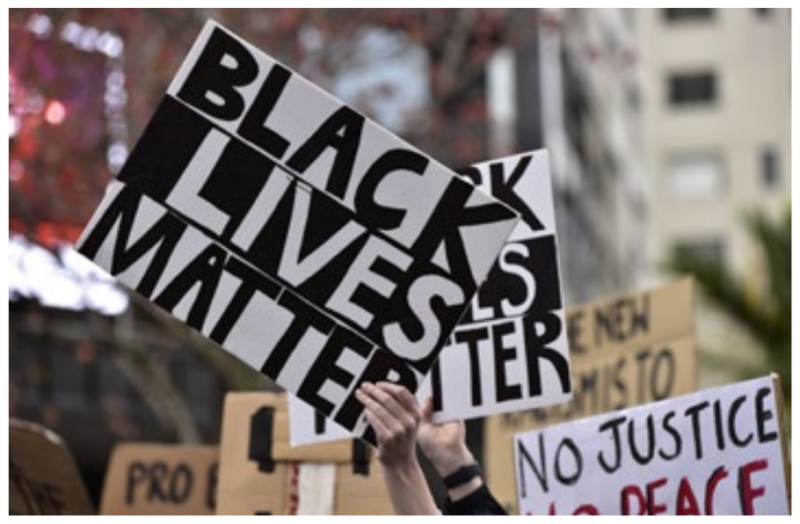
아직도 남아있는 앙금과 숙제
인종차별은 아직도 우리에게 남아있는 숙제다. 3년전 미네소타 조지 플로이드 사태로 Black Lives Matter 운동과 시위가 계속 이어져 왔다. 수십년동안
눌려있던 눈에 보이지 않는 억압과 차별로 인한 쌓여있던 감정이 폭발한 시점이었는지 모른다. 하지만 도가 넘는 폭동과 약탈, 한인가게 오너들을 매일매일 위협하는 그들의 행위는 지나치다. 과연 혼자 늦게 열어두고 장사해도 무섭지 않은 매장, 점원이 보지 않아도 카운터에서 계산을 기다리는 매장의 모습을 볼 수 있는 날이 올까? 어쩌면 문화적으로, 시간적으로 우리는 조금 더 기다려야하는지도 모르겠다. Black History Month 를 기리면서 아직도 보이지 않게 지속되고 있는 흑인들에 대한 은근한 차별이 사라지고, 그들의 귀한 문화가 대중의 사랑을 받음으로서 그들의 아름다움이 더 풍성해지기를 기대해 본다.
The Lingering Pain and Homework
Racial discrimination is still our lingering homework. Three years ago, after the incident involving George Floyd in Minnesota, the Black Lives Matter movement and protests have continued. Perhaps it was the moment when emotions that had been accumulating due to invisible oppression and discrimination for decades finally exploded. However, the excessive violence, looting, and the greed of those who threaten Korean American store owners every day have crossed the line. Will there ever be a day when it is not scary to leave a store open late and do business? Maybe culturally and temporally, we still need to wait a little longer. I hope that the rights and culture of black people, which have been suppressed in history, will be loved, allowing their beauty to become even more abundant.
〈기고자 : 주낙원 부장 / I & I Hair Corporation〉



